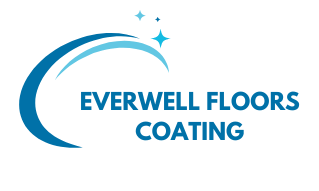Epoxy Floor Covering
Epoxy floor coverings are renowned for their robustness and are a popular choice in various settings, ranging from residential garages to commercial and industrial buildings. This type of flooring system involves the application of a thermosetting resin that is applied as a coating. It is composed of two main components: a polymer resin and a hardener that, when mixed, trigger a chemical reaction forming a strong, plastic-like material. This mixture adheres well to most base layers, especially concrete, creating a smooth, durable, and resilient surface.
What is Epoxy Flooring?
Epoxy is characterized by its hard, glossy finish that can withstand considerable wear and tear, making it ideal for floors that must bear heavy loads or high traffic. The installation process begins with thorough surface preparation, crucial to ensure the epoxy coating adheres well and lasts. The concrete floor must be clean, dry, and free from any debris, oils, or previous coatings. Technicians often prepare the floor through mechanical means such as diamond grinding or shot blasting to achieve the ideal texture for coating adherence.
Once the floor is prepared, the epoxy resin is mixed with the hardener. This mixture must be applied quickly before it begins to set. It's poured onto the floor and spread out evenly using rollers or squeegees. The epoxy then cures over a period of hours or days, depending on the specific type of epoxy used and ambient conditions, such as temperature and humidity.
Introduction to Polyurea Floor Coverings
While epoxy has been a staple in floor coatings for decades, polyurea floor coverings are gaining traction as a superior alternative in many respects. Polyurea is an elastomer material derived from a reaction between a polyisocyanate component and a resin blend. This type of floor covering is notable for its rapid curing time, extreme durability, and excellent resistance to chemicals, abrasion, and weather.
Benefits of Polyurea Over Epoxy Floor Coverings
Faster Curing Time:
Polyurea sets remarkably fast compared to epoxy. While epoxy can take several days to fully cure, polyurea floor coatings can be ready for use in just a few hours. This rapid curing time reduces downtime for businesses and can be crucial for projects on tight schedules.
Enhanced Durability:
Polyurea is not only harder and more durable than epoxy, but it also retains a higher degree of flexibility, which helps it resist cracking and peeling under extreme conditions. This makes polyurea an excellent choice for floors that undergo significant thermal shifts or that need to withstand heavy impacts.
Superior Resistance:
Polyurea outperforms epoxy in terms of chemical and moisture resistance. This quality makes it ideal for areas that may be exposed to harmful substances or environments where moisture is prevalent, such as in basements or warehouses that store chemicals.
Application Versatility:
The ability of polyurea to cure quickly at a wide range of temperatures and its superior adhesion properties allow it to be applied in less-than-ideal conditions. This versatility makes it a go-to option for both indoor and outdoor applications, regardless of climate.
In summary, while epoxy floor coverings offer a reliable and cost-effective solution for many flooring needs, polyurea coatings provide superior benefits for more demanding environments. Choosing between the two will depend on the specific requirements of the project, including factors like expected traffic, exposure to harsh conditions, and the need for rapid application and use.
